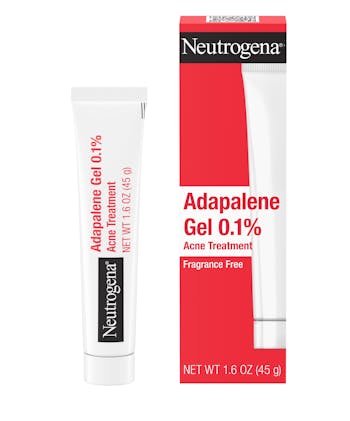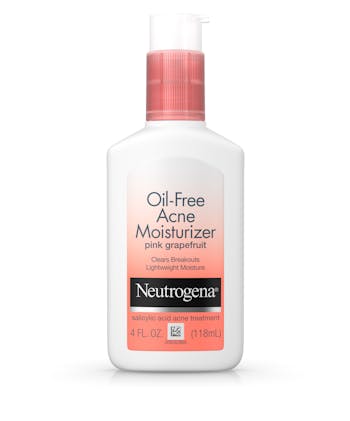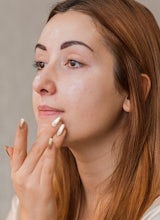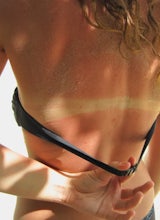Are you searching the skincare world for an effective solution to persistent acne? It's time to delve into a crucial question: What is adapalene? Far from just a buzzword in beauty and skincare circles, adapalene is a proven acne-fighting ingredient with a knack for tackling breakouts.
There's a lot to explore with this standout ingredient, from its origins in the retinoid family to its powerful impact on acne treatment. Dig in to discover how it can become a trusted partner in your skincare journey.
What Is Adapalene?
Adapalene is part of the retinoid family, a group of vitamin A derivatives known for minimizing the visible signs of aging and other benefits. Its superpower? Preventing and treating acne breakouts by regulating skin cell turnover so your pores don't get clogged. It's also an anti-inflammatory, calming the redness and swelling that often go hand-in-hand with acne. And by reducing breakouts, it improves your skin's texture and tone.
Adapalene is effective and well tolerated, and it's more chemically stable than other retinoids. These characteristics make it a preferred choice for managing acne without being too harsh on your skin.
Available in various formulations, from creams to gels, adapalene has been approved for over-the-counter use by the Food and Drug Administration since 2016 for people 12 and older. Looking for a formulation that's both effective and well tolerated? Try Neutrogena® 0.1% Adapalene Gel Acne Treatment, a prescription-strength gel formulated to help fight pimples, blemishes and acne.
The Benefits of Adapalene for Acne
Keeps Pores Free and Clear
Adapalene's primary role is to ensure your skin cells shed and renew efficiently, keeping your pores free from blockages. This is crucial to preventing dead skin cell buildup, one of the top causes of comedonal acne (blackheads and whiteheads).
But adapalene doesn't stop there. It also has a unique power called comedolysis, which targets clogged pores by breaking down oil and dead skin.
Prevents Breakouts
Adapalene can improve the appearance of existing blemishes, but it can also prevent new ones from forming.
Treats All Types of Acne
Another phenomenal thing about adapalene? It's not picky about the type of acne it fights. This ingredient does it all, targeting noninflammatory forms, such as blackheads and whiteheads, and inflammatory types, like hormonal and cystic acne.
How Often To Use Adapalene
So, is it OK to use adapalene every day? Starting an adapalene routine is similar to embarking on a fitness journey — it's best to ease into it. Kick off by applying a small amount three times a week to help your skin adjust and reduce the chances of irritation. After a couple of weeks, gradually step up to daily application, ideally at night.
It's normal to experience some irritation with adapalene within the first two to four weeks as your skin adjusts. If your symptoms feel overwhelming or persist for more than a month, consult a skincare professional for advice.
In the meantime, nurture your skin with a non-comedogenic moisturizer rich in soothing ingredients like aloe vera and niacinamide. Adapalene makes your skin more vulnerable to sunburn, so arm yourself with a broad spectrum sunscreen of SPF 30 or higher every day. And tread carefully if you're thinking of teaming adapalene with other skincare heavyweights like alpha hydroxy acids, beta hydroxy acids or benzoyl peroxide until your dermatologist gives you the green light.
When You'll See Results
While you may notice changes in as little as two to three weeks, it usually takes closer to eight to 12 weeks to see significant results. Results can vary depending on your skin type and acne severity. No matter who you are, sticking to a regular application schedule is crucial to achieving and maintaining the best results. So, use it consistently to ensure your skin stays vibrant and clear in the long term.
FAQ
How long does adapalene take to work?
You might start to see improvements within two to three weeks, but it typically takes about eight to 12 weeks to see significant results. Patience and consistency are essential, as your acne may initially worsen (called purging) before breakouts clear.
Can I apply adapalene after moisturizer?
Yes, you can apply adapalene after moisturizer. This method, known as "buffering," may help reduce irritation. Apply a gentle, non-comedogenic moisturizer, wait for it to absorb fully, then apply adapalene. However, applying products directly to clean, dry skin may improve absorbency, thereby increasing efficacy, so follow your dermatologist's advice.
Does adapalene help with wrinkles?
Yes, adapalene can help with wrinkles. It's a type of retinoid, which promotes skin cell renewal and reduces the appearance of fine lines and wrinkles over time. However, its primary use is to treat acne, so other retinoids may be more effective for reducing the look of wrinkles.
Is adapalene a retinol?
Adapalene and retinol both belong to the retinoid family, but they're not the same. When it comes to adapalene vs. retinol, adapalene is more potent. It's also specifically formulated to treat acne and has a slightly different chemical structure.
Can adapalene be used to treat body acne?
Yes, adapalene can be used to treat acne on the body, such as on the back or chest. Keep in mind that the skin in these areas may be less sensitive than facial skin, but it's still essential to start slow and gradually increase use as your skin adjusts.











